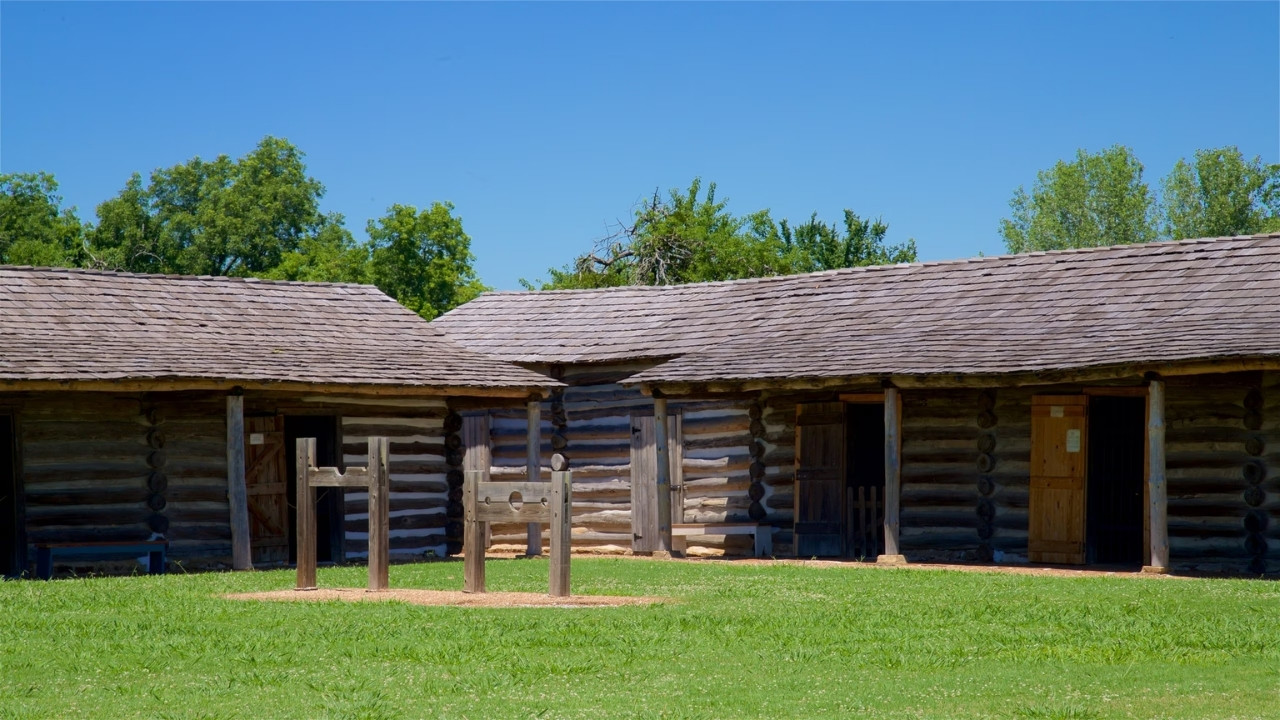Secrets Of Oklahoma’s Fort Gibson Pioneer Forts

Have you ever wondered what life was like for early settlers in Oklahoma? Fort Gibson offers a fascinating glimpse into the past. Established in 1824, this historic site served as a military outpost and played a crucial role in the Indian Territory. Visitors can explore restored buildings, see original artifacts, and even participate in reenactments. Walking through the fort, you can almost hear the echoes of soldiers and settlers who once called this place home. Whether you're a history buff or just looking for an educational day trip, Fort Gibson provides a unique window into America's frontier days.
Discovering Oklahoma's Fort Gibson Pioneer Forts
Oklahoma's rich history is deeply intertwined with its pioneer forts. These forts played crucial roles in the state's development, serving as military outposts, trading hubs, and cultural melting pots. Let's explore some of the most fascinating pioneer forts in Fort Gibson, Oklahoma.
Fort Gibson Historic Site
Fort Gibson, established in 1824, is one of the oldest forts in Oklahoma. It served as a key military post during the Indian Removal Act and the Civil War. Today, it stands as a testament to the state's storied past.
Fort Gibson Stockade: This reconstructed stockade offers a glimpse into the life of soldiers and settlers. Walk through the barracks, officers' quarters, and guardhouse to experience history firsthand.
Fort Gibson National Cemetery: Established in 1868, this cemetery is the final resting place for many soldiers who served at the fort. It's a peaceful place to reflect on the sacrifices made by those who came before us.
Fort Gibson Museum: Located within the historic site, this museum houses artifacts and exhibits detailing the fort's history. From military uniforms to Native American artifacts, there's much to learn here.
Fort Washita
Fort Washita, though not in Fort Gibson, is another significant pioneer fort in Oklahoma. Established in 1842, it served as a military post to protect the Chickasaw and Choctaw Nations.
Fort Washita Historic Site: Explore the ruins of the original fort buildings, including the barracks, hospital, and officers' quarters. The site offers a unique look into the daily lives of soldiers and their families.
Fort Washita Cemetery: This cemetery is the final resting place for many soldiers and their families. It's a somber reminder of the fort's historical significance.
Annual Fur Trade Rendezvous: Held at Fort Washita, this event recreates the fur trade era with reenactments, demonstrations, and vendors. It's a fun way to experience history in a hands-on manner.
Fort Towson
Fort Towson, established in 1824, played a crucial role in the settlement of the Indian Territory. It served as a military post, trading hub, and a place of refuge for settlers.
Fort Towson Historic Site: Wander through the ruins of the original fort buildings, including the barracks, commissary, and officers' quarters. Interpretive signs provide context and history at each location.
Fort Towson Cemetery: This cemetery is the final resting place for many soldiers and settlers. It's a peaceful place to pay respects and reflect on the fort's history.
Annual Fort Towson Days: This event celebrates the fort's history with reenactments, demonstrations, and activities for all ages. It's a great way to learn about the fort's past while having fun.
Fort Reno
Fort Reno, established in 1874, was initially a military camp to control the Cheyenne and Arapaho tribes. It later became a remount station for the U.S. Army.
Fort Reno Historic Site: Explore the original fort buildings, including the barracks, officers' quarters, and stables. The site offers a fascinating look into the fort's history and its role in the Indian Wars.
Fort Reno Cemetery: This cemetery is the final resting place for many soldiers and their families. It's a serene place to reflect on the fort's historical significance.
Fort Reno Ghost Tours: Held annually, these tours explore the fort's haunted history. It's a spooky yet educational way to learn about the fort's past.
Fort Sill
Fort Sill, established in 1869, is one of the most well-preserved forts in Oklahoma. It played a crucial role in the Indian Wars and later became a training ground for soldiers.
Fort Sill National Historic Landmark and Museum: This museum offers a comprehensive look at the fort's history, from its establishment to its role in modern military training. Exhibits include military artifacts, photographs, and documents.
Geronimo's Grave: Located within Fort Sill, this grave is the final resting place of the famous Apache leader. It's a significant historical site that draws visitors from around the world.
Fort Sill Artillery Museum: This museum showcases the history of artillery, with exhibits ranging from early cannons to modern artillery pieces. It's a must-visit for military history enthusiasts.
Why Fort Gibson Should Be on Your Travel List
Fort Gibson offers a unique glimpse into Oklahoma's rich history. Walking through the pioneer forts, you can almost hear the echoes of the past. The historic buildings and artifacts tell stories of bravery, hardship, and daily life from a bygone era.
Exploring the museum exhibits and reenactments brings history to life in a way that books can't. It's an educational experience for kids and adults alike. The scenic views and nature trails around the fort add to the charm, making it a perfect spot for a family outing or a solo adventure.
Whether you're a history buff or just looking for a unique day trip, Fort Gibson has something for everyone. Don't miss out on this hidden gem in Oklahoma. Plan your visit today and step back in time.

